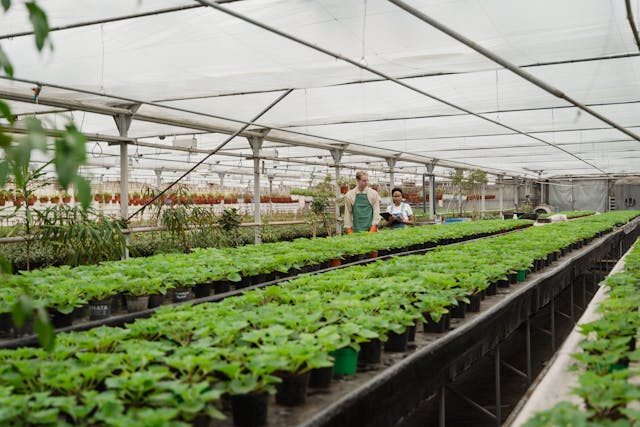
Why Affordable Greenhouse Automation Matters
Small farms and high-tunnel operators often run on tight margins and limited staff, yet the crops they produce are critical to local food systems and the wider economy. Automating greenhouse ventilation—which controls temperature, humidity, and airflow—reduces manual work, limits crop losses, and improves yields.
myDevices delivers wireless IoT solutions tailored for smaller operations so growers can adopt automation without the steep costs or technical barriers of traditional environmental controllers.
Common Barriers for Small Farms
Farmers frequently tell us automation feels out of reach because:
- Greenhouses vary widely in design: ridge vents, exhaust fans, roll-up sides—and one solution rarely fits all.
- Conventional controllers often cost thousands and need specialized setup and maintenance.
- Smaller operations face longer ROI timelines and limited cash to purchase complex systems.
As a result, many growers still manually open vents or switch fans—every day—exposing crops to human error and weather risk.
myDevices: Compact, Wireless, and Easy to Install
myDevices provides a modular IoT stack designed specifically for ease and affordability: long-battery wireless sensors, relay control units for fans and vent motors, and cloud logic that automates actions when conditions change.
Simple Sensors
Temperature and humidity sensors placed at crop level provide accurate microclimate readings.
Relay Control Units
Compact control units switch fans, motors, and roll-up sides with defined run times and staging.
Wireless Gateways
Gateways forward sensor data to the cloud and enable remote control from your smartphone or laptop—no complex wiring required.
Cloud Automation
Set thresholds, create staged ventilation logic, and receive alerts when conditions deviate from target ranges.
These components work together to create an automated microclimate that reduces heat stress, prevents disease, and improves crop uniformity.
How a Typical Installation Works
- Site survey: Identify the greenhouse type, vent locations, fan motors, and power needs.
- Sensor placement: Install temperature/humidity sensors at crop canopy level in representative zones.
- Control wiring: Mount a relay control unit in an outdoor-rated enclosure and wire to fan/vent motor contactors or roll-up curtain switches.
- Gateway and cloud setup: Connect the gateway to the internet (Ethernet or cellular) and configure automation rules in the myDevices cloud dashboard.
- Test & tune: Validate thresholds, staging times, and notification channels (SMS, email, push alerts).
Benefits Small Farms See Immediately
- Lower upfront cost: Wireless, off-the-shelf components cut hardware and installation expenses.
- Reduced labor: Eliminate daily manual venting and free up farm staff for higher-value tasks.
- Better crop protection: Maintain stable temperatures and humidity to reduce disease and spoilage.
- Remote visibility: Monitor greenhouse conditions and receive alerts from anywhere.
- Faster ROI: Reduced waste and labor translate to improved margins within a season for many farms.
Field Example: High-Tunnel Grower Cuts Manual Checks in Half
A regional high-tunnel operator deployed myDevices sensors and a pair of relay control units across four tunnels. After configuring staged ventilation rules, the grower reported a 60% reduction in time spent manually venting and fewer temperature spikes during hot afternoons—improving consistent ripening and reducing crop losses from heat stress.
ROI: More Than Just Savings on Equipment
ROI comes from multiple sources: lower equipment and installation cost versus legacy controllers, labor savings, reduced crop losses, and better record-keeping for traceability. Many small farms see payback within one to two growing cycles depending on crop value and system scope.
Technical Highlights and Best Practices
- Long-range wireless: Choose sensors with robust non-line-of-sight range to cover multiple tunnels with fewer gateways.
- Layered security: Ensure data encryption from sensor to cloud and secure access policies for dashboards and alerts.
- Manual override: Include local manual switches and accessible enclosure placement for safety and quick intervention.
- Staging: Use relay timers to partially open vents sequentially for gentler temperature control.
Ready to Automate Your Greenhouse Ventilation?
Explore tailored myDevices solutions for farm environments, or request a free site assessment to see how wireless sensors can improve your yields and simplify operations.
See myDevices Temperature & Monitoring Solutions